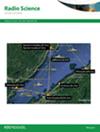低截获波形:防止通过对抗范例识别频谱波形调制
IF 1.5
4区 地球科学
Q3 ASTRONOMY & ASTROPHYSICS
引用次数: 0
摘要
深度学习因其便捷性和高效性,被应用于无线通信领域的许多复杂任务,如频谱波形的调制识别。这就导致了恶意第三方利用深度学习模型轻松识别传输波形的调制格式的问题。现有的一些作品直接使用计算机视觉领域的对抗范例概念来解决这一问题,而没有充分考虑物理世界中波形传输的特点。因此,我们提出了两种低拦截波形(LIWs)生成方法,即LIW算法和ULIW算法,它们可以在不影响友方可靠通信的前提下降低调制方式被第三方识别的概率。其中,ULIW 通过在训练周期内模拟信道噪声来改进 LIW 算法,在保持较低拦截精度的同时大幅降低了扰动幅度。我们的LIW和ULIW在数值模拟和硬件实验中都表现出了显著的低拦截性能。本文章由计算机程序翻译,如有差异,请以英文原文为准。
Low-interception waveforms: To prevent the recognition of spectrum waveform modulation via adversarial examples
Deep learning is applied to many complex tasks in the field of wireless communication, such as modulation recognition of spectrum waveforms, because of its convenience and efficiency. This leads to the problem of a malicious third party using a deep learning model to easily recognize the modulation format of the transmitted waveform. Some existing works address this problem directly using the concept of adversarial examples in the computer vision field without fully considering the characteristics of the waveform transmission in the physical world. Therefore, we propose two low-interception waveforms (LIWs) generation methods, the LIW and ULIW algorithms, which can reduce the probability of the modulation being recognized by a third party without affecting the reliable communication of the friendly party. Among them, ULIW improves LIW algorithm by simulating channel noise during training cycle, and substantially reduces the perturbation magnitude while maintaining low interception accuracy. Our LIW and ULIW exhibit significant low-interception performance in both numerical simulations and hardware experiments.
求助全文
通过发布文献求助,成功后即可免费获取论文全文。
去求助
来源期刊

Radio Science
工程技术-地球化学与地球物理
CiteScore
3.30
自引率
12.50%
发文量
112
审稿时长
1 months
期刊介绍:
Radio Science (RDS) publishes original scientific contributions on radio-frequency electromagnetic-propagation and its applications. Contributions covering measurement, modelling, prediction and forecasting techniques pertinent to fields and waves - including antennas, signals and systems, the terrestrial and space environment and radio propagation problems in radio astronomy - are welcome. Contributions may address propagation through, interaction with, and remote sensing of structures, geophysical media, plasmas, and materials, as well as the application of radio frequency electromagnetic techniques to remote sensing of the Earth and other bodies in the solar system.
 求助内容:
求助内容: 应助结果提醒方式:
应助结果提醒方式:


